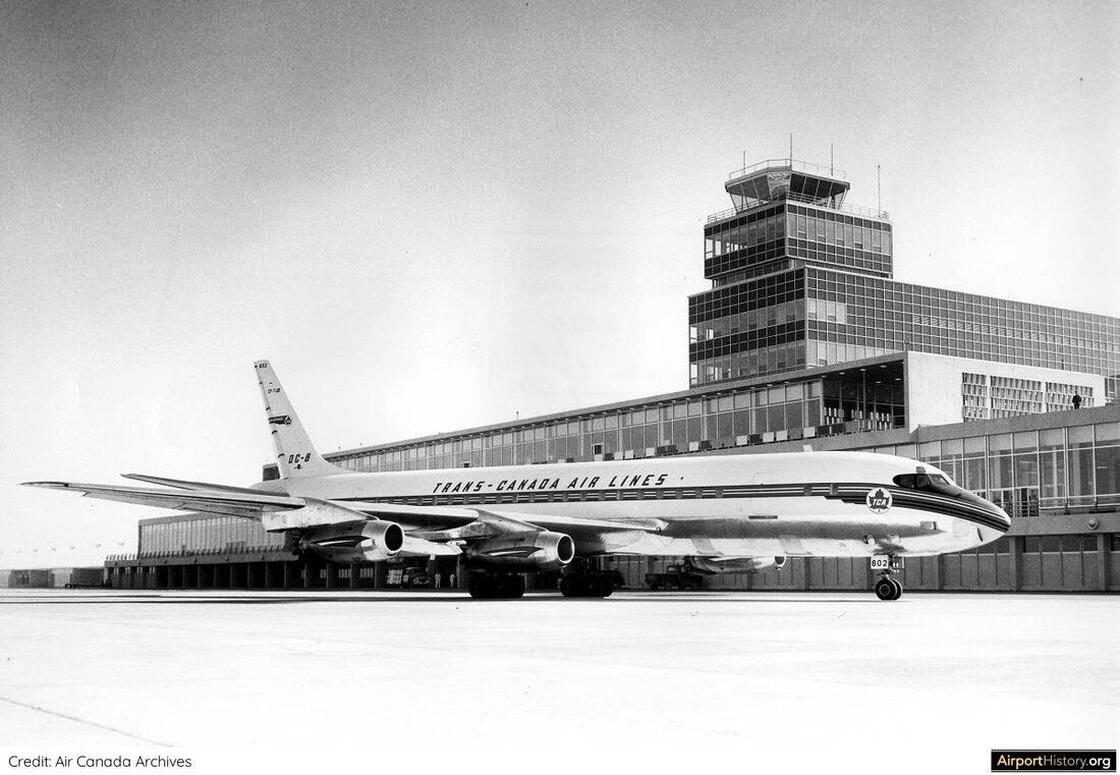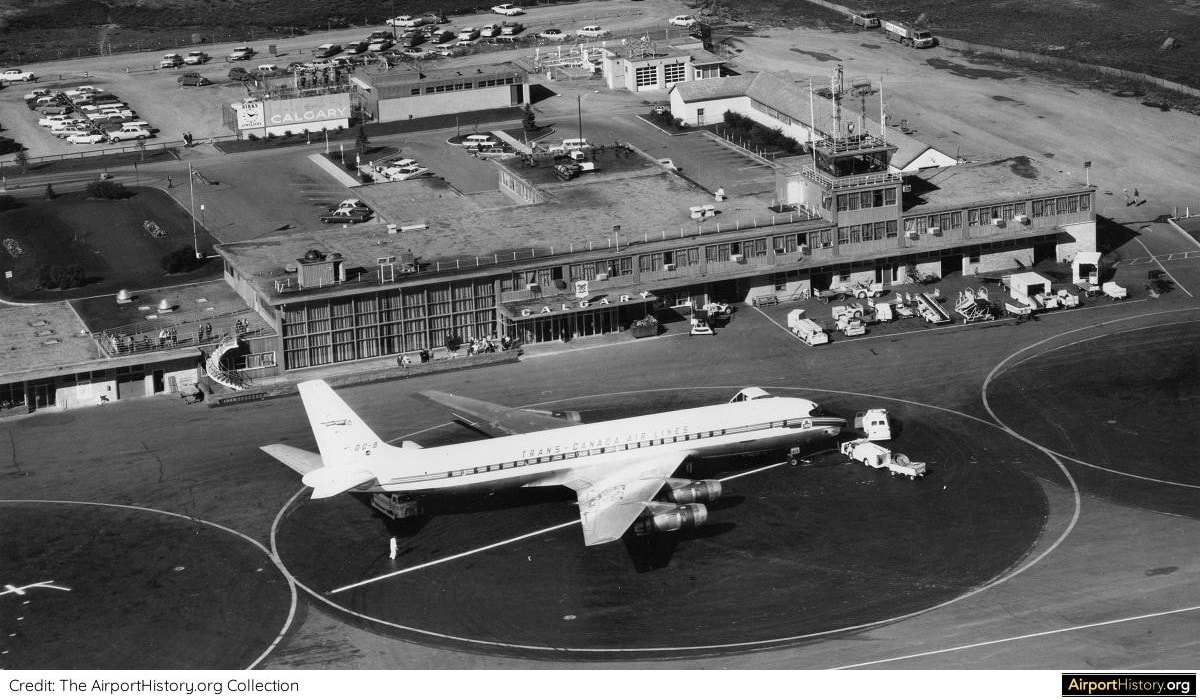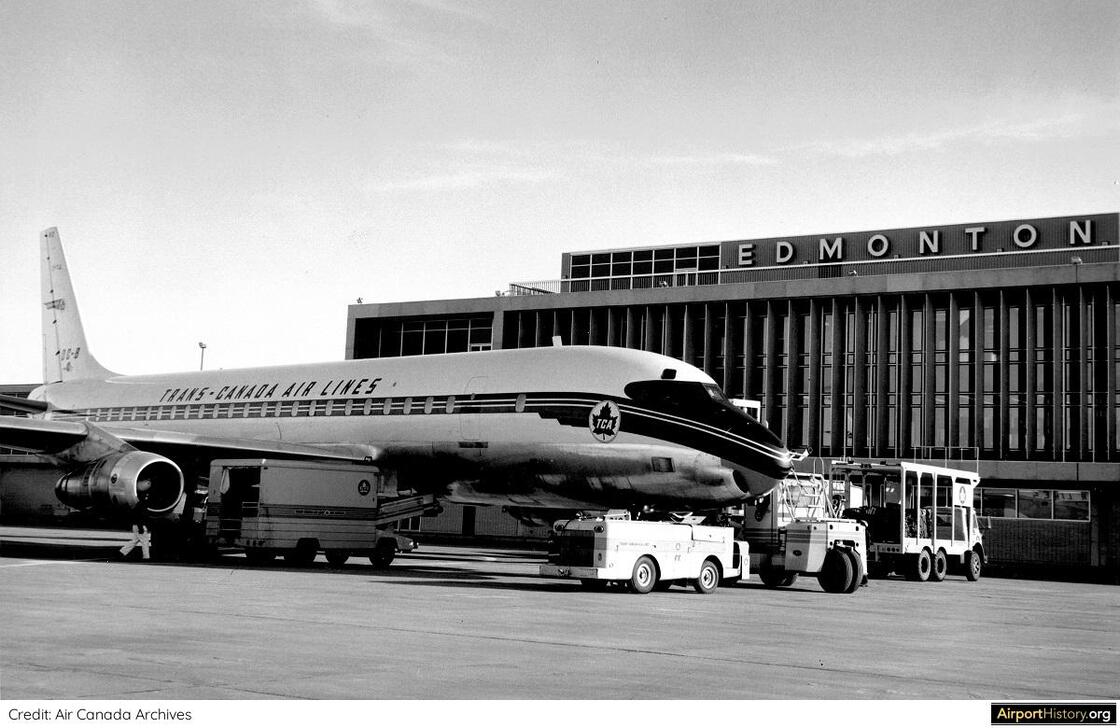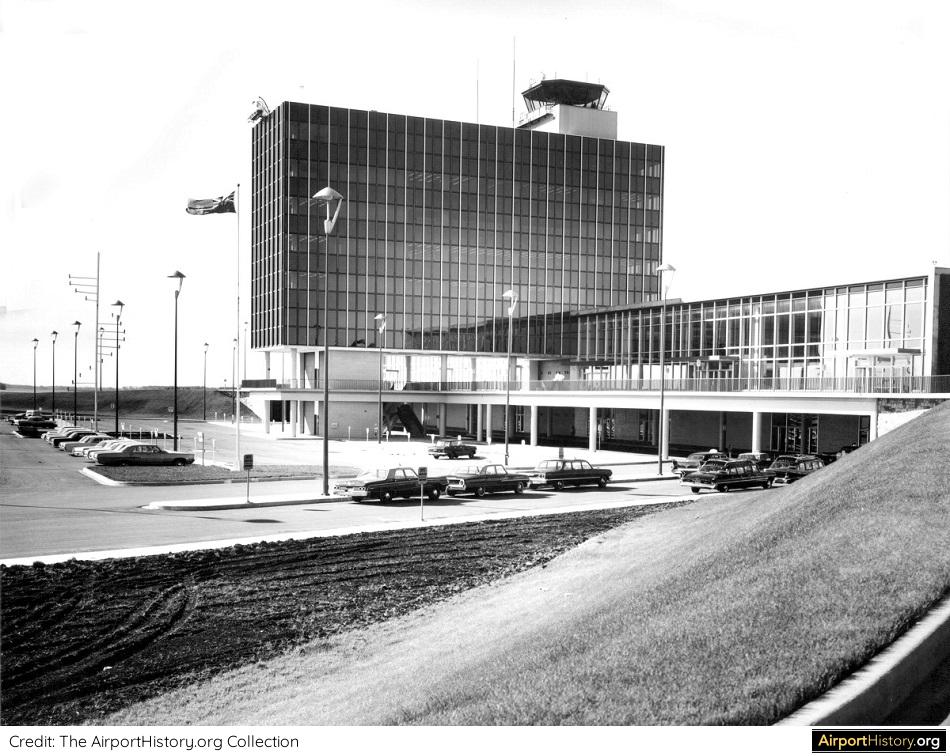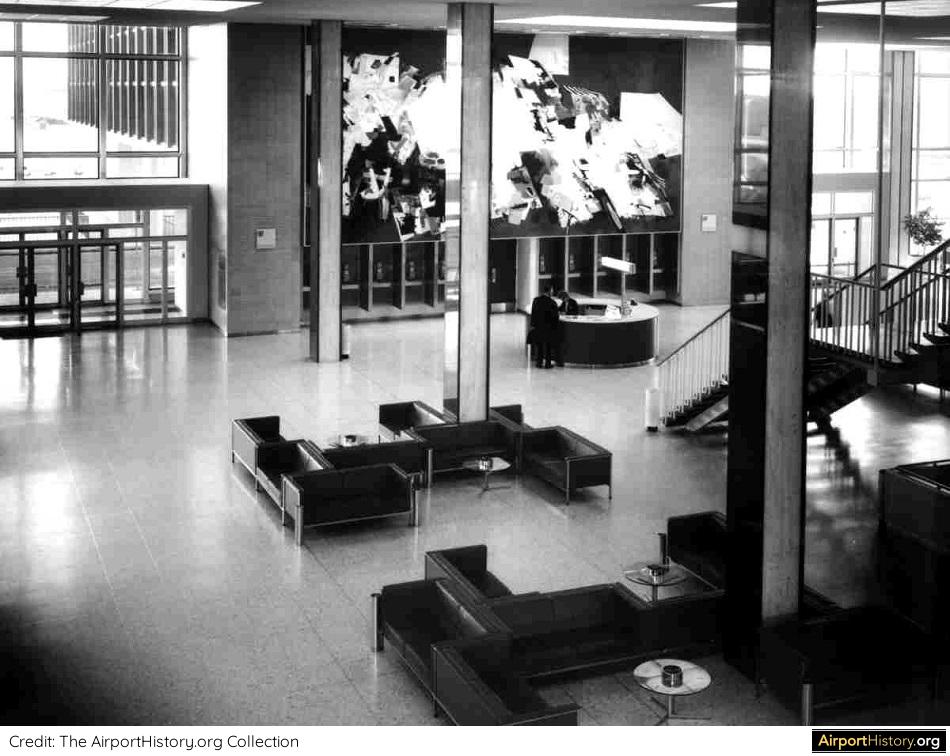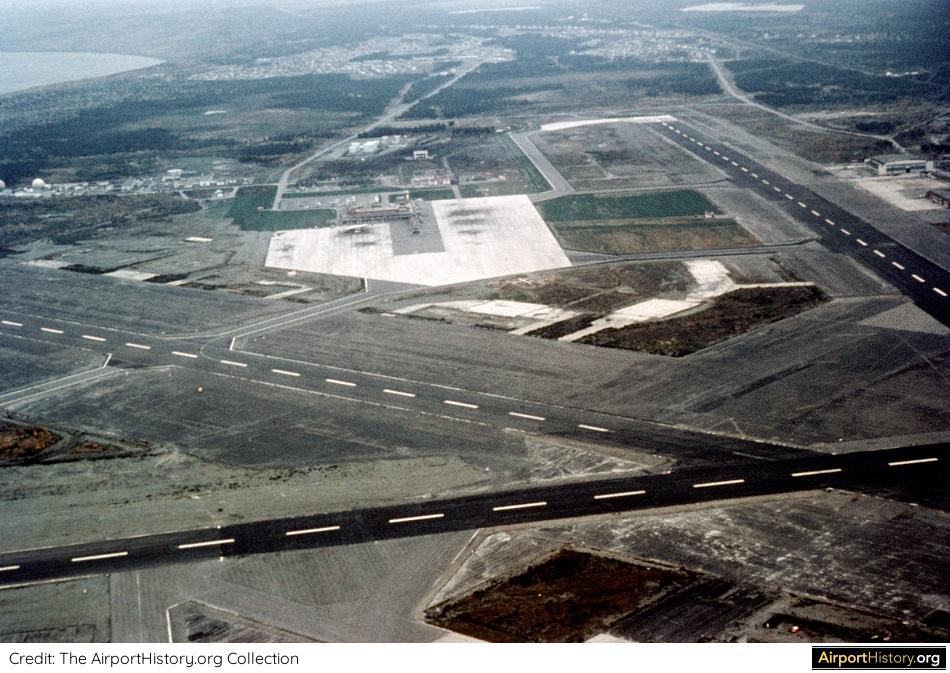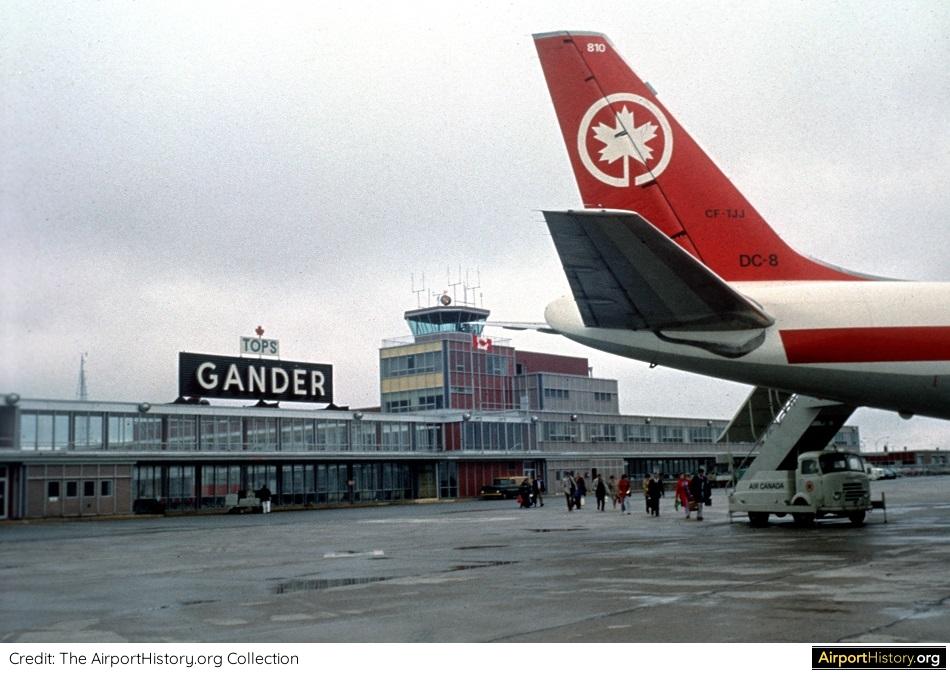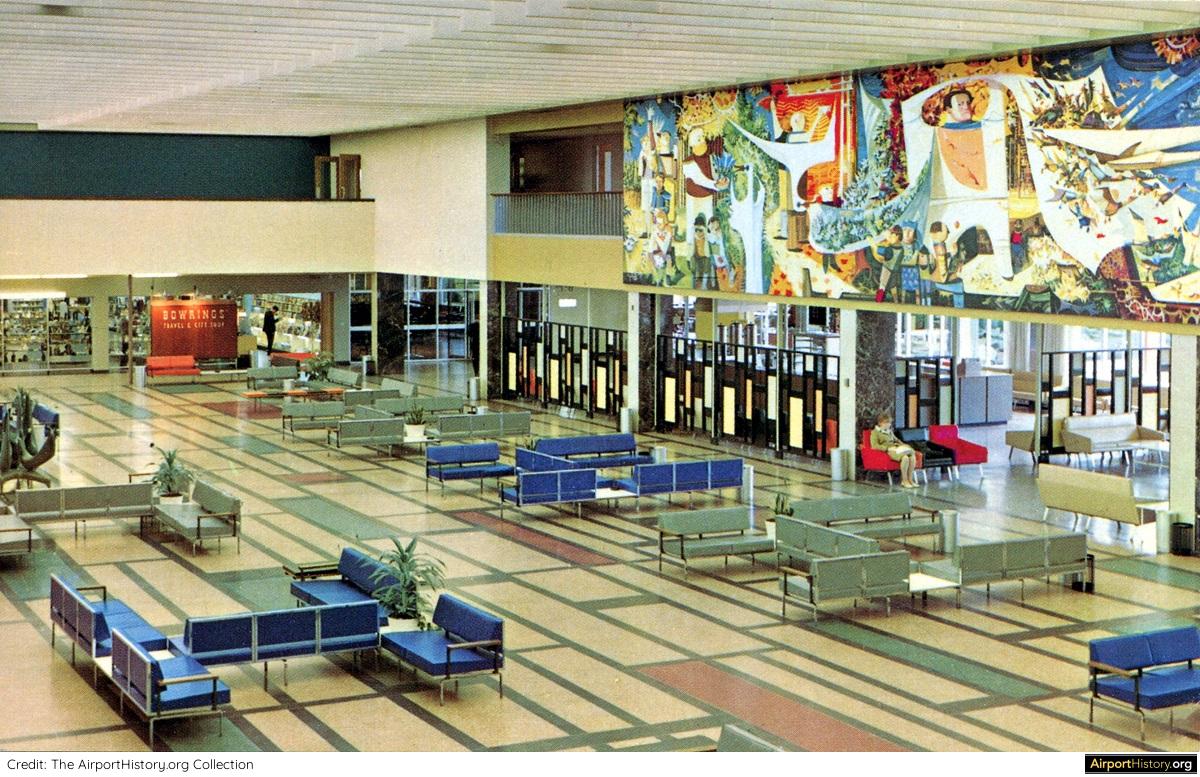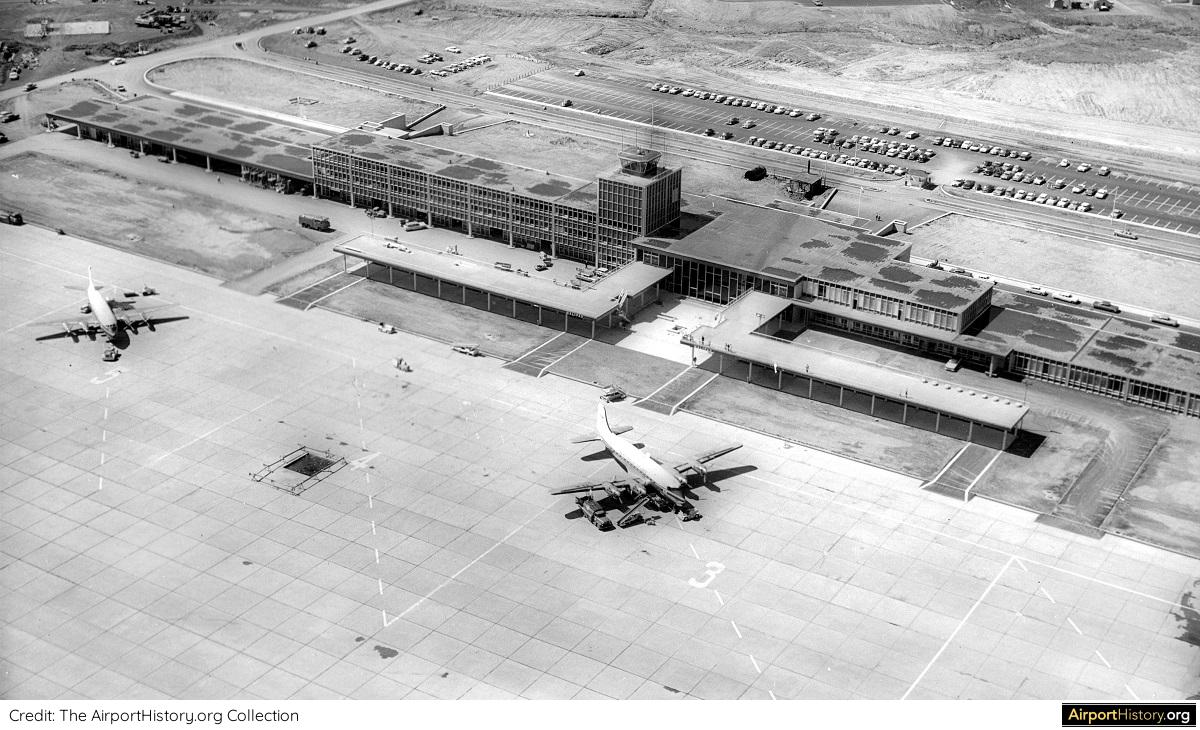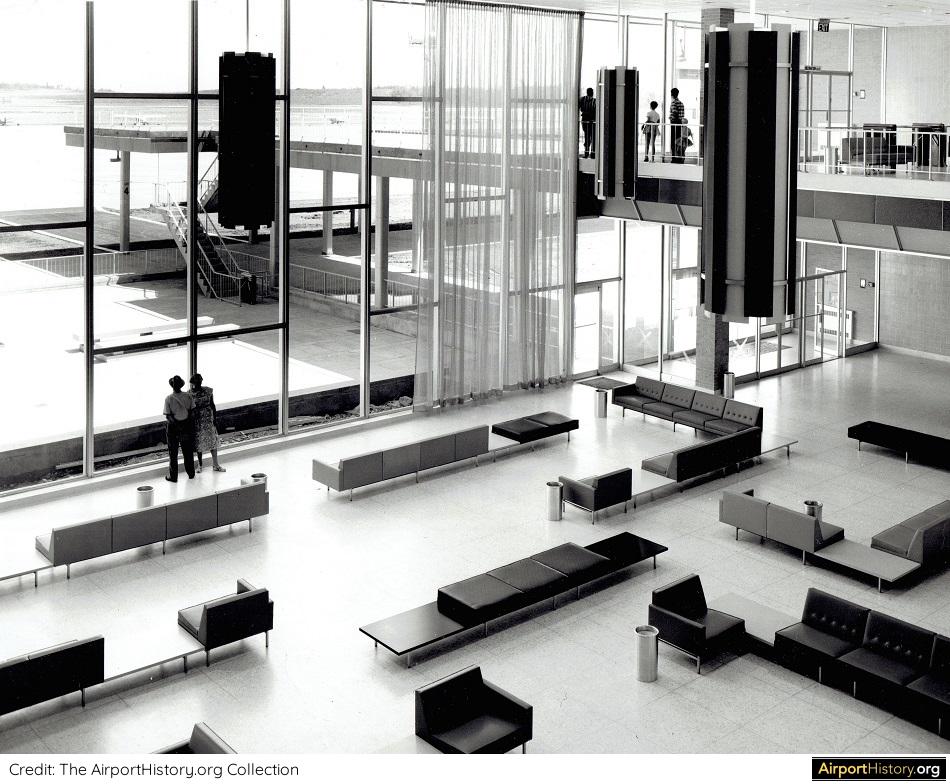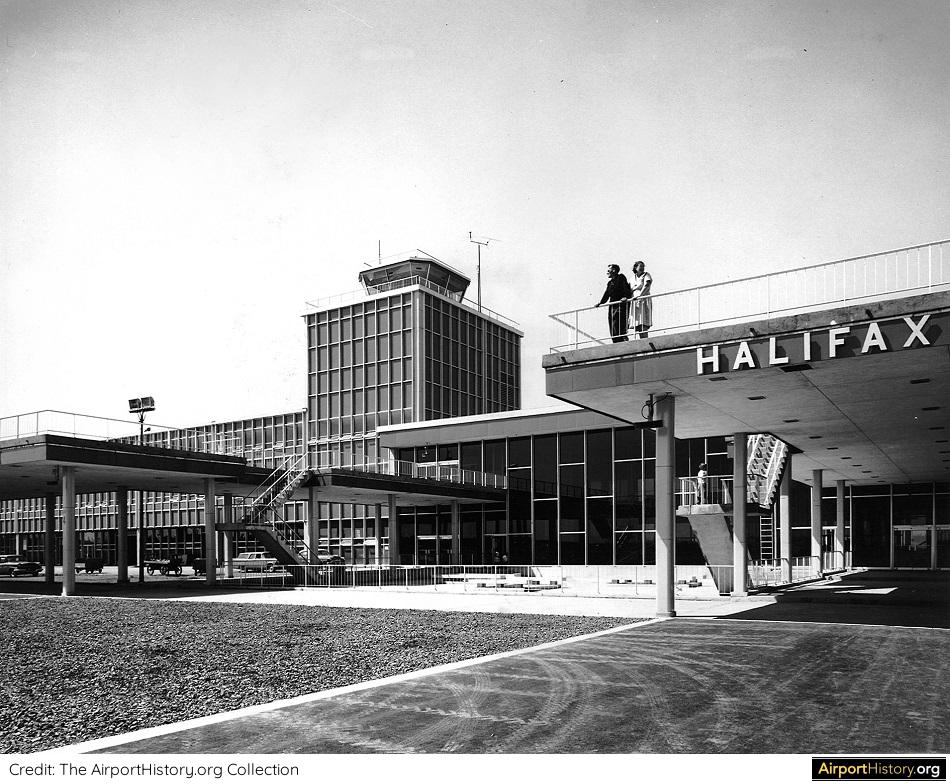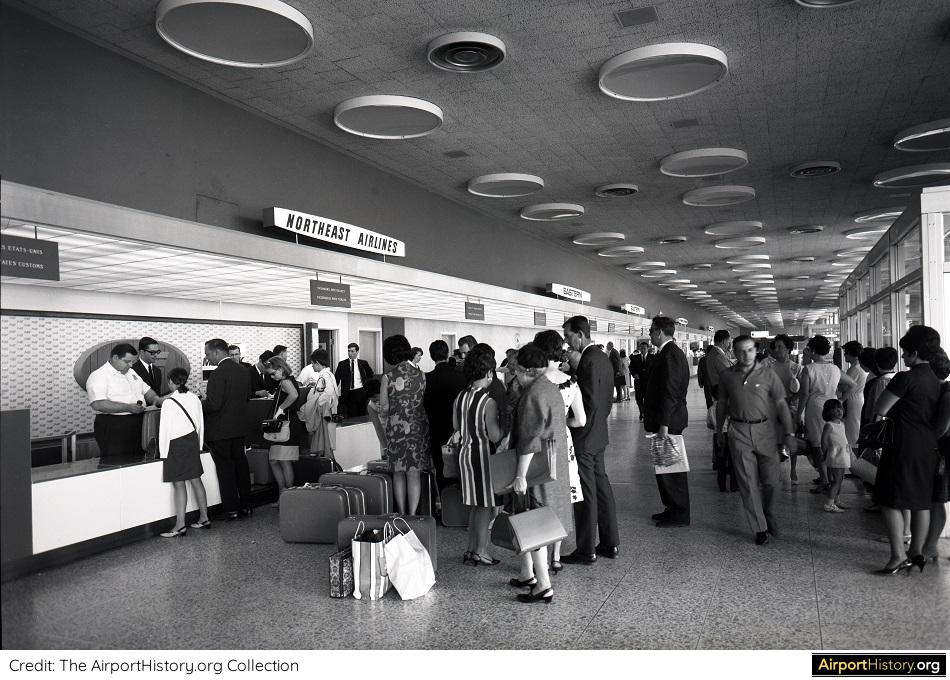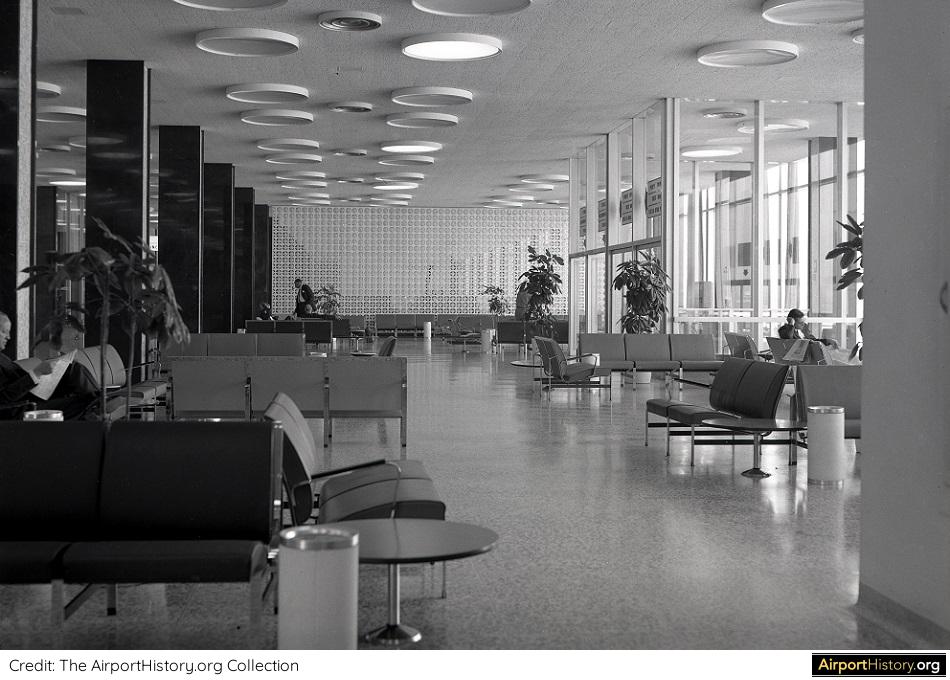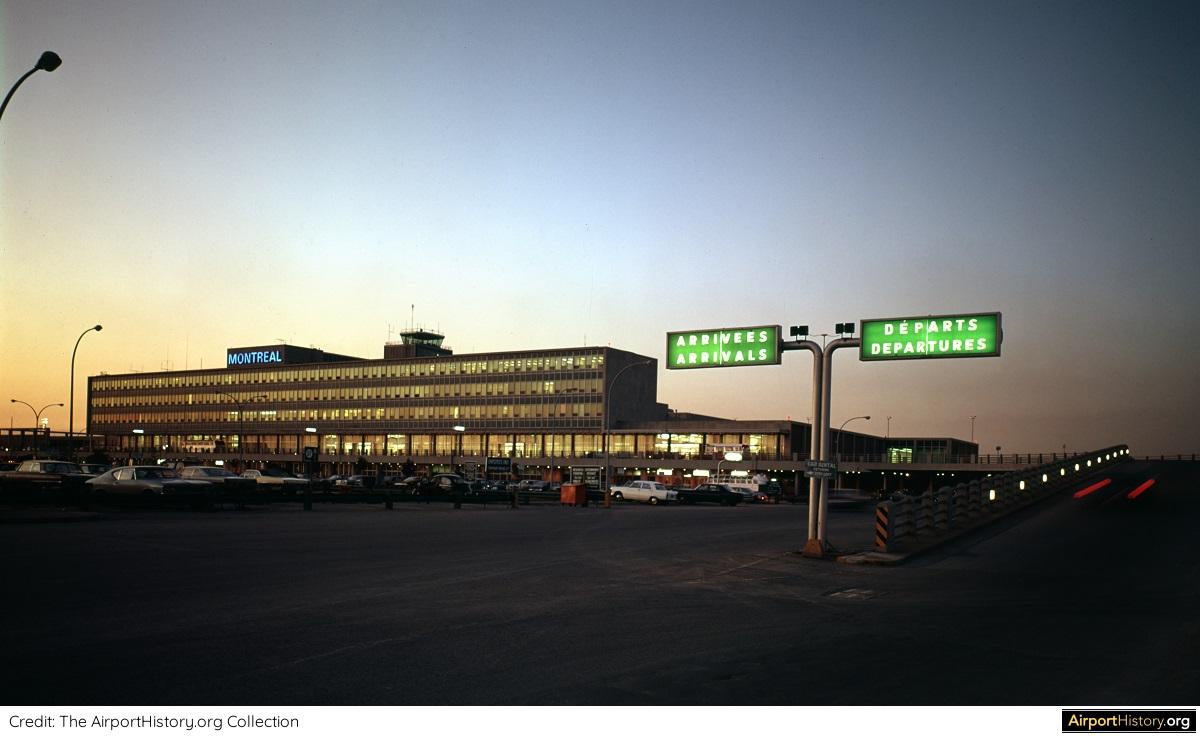Published: February 14th, 2020
Introduction
Canada has some of the world's finest airports. Passenger terminals are frequently updated, expanded and even completely rebuilt. The nation's airports also have a long and colorful history, going back to the earliest days of aviation.
The 1960s are a particularly interesting period as many fascinating experiments in airport design took place during that decade. In 1960, Montréal opened the world's largest passenger terminal building. Toronto had a world exclusive by opening the world's first circular terminal in 1964. Other major centers, such as Edmonton, Halifax and Ottawa also entered the early Jet Age with state-of-the-art airports and terminals.
Other major cities had to be patient a bit longer before they received modern facilities. Vancouver did not get its Jet-Age terminal until 1968 and Calgary took the cake in terms of time; its modern terminal did not open until 1977.
In the AirportHistory archives, we have a vast selection of photos covering Canadian airports in the mid-century period. In this two-part special, we will present a overview of those focusing on the major airports in the 1960s.
The 1960s are a particularly interesting period as many fascinating experiments in airport design took place during that decade. In 1960, Montréal opened the world's largest passenger terminal building. Toronto had a world exclusive by opening the world's first circular terminal in 1964. Other major centers, such as Edmonton, Halifax and Ottawa also entered the early Jet Age with state-of-the-art airports and terminals.
Other major cities had to be patient a bit longer before they received modern facilities. Vancouver did not get its Jet-Age terminal until 1968 and Calgary took the cake in terms of time; its modern terminal did not open until 1977.
In the AirportHistory archives, we have a vast selection of photos covering Canadian airports in the mid-century period. In this two-part special, we will present a overview of those focusing on the major airports in the 1960s.
Calgary
Calgary is the largest city in the vast western province of Alberta. Calgary International Airport is a major gateway to the west and Canada's fourth busiest airport. The current airport opened in September 1939. Initially, passengers were handled in a re-purposed hangar. It wasn't until 1956, until the first purpose-built passenger terminal was put into service. At the time, it was considered Canada's most modern facility.
However, when the Jet Age roared in five years later, the new terminal became immediately obsolete and the City of Calgary was forced to return to the drawing board. In 1964, it was decided to build an entirely new terminal complex. However, it would take until 1977 before the new facility finally opened.
However, when the Jet Age roared in five years later, the new terminal became immediately obsolete and the City of Calgary was forced to return to the drawing board. In 1964, it was decided to build an entirely new terminal complex. However, it would take until 1977 before the new facility finally opened.
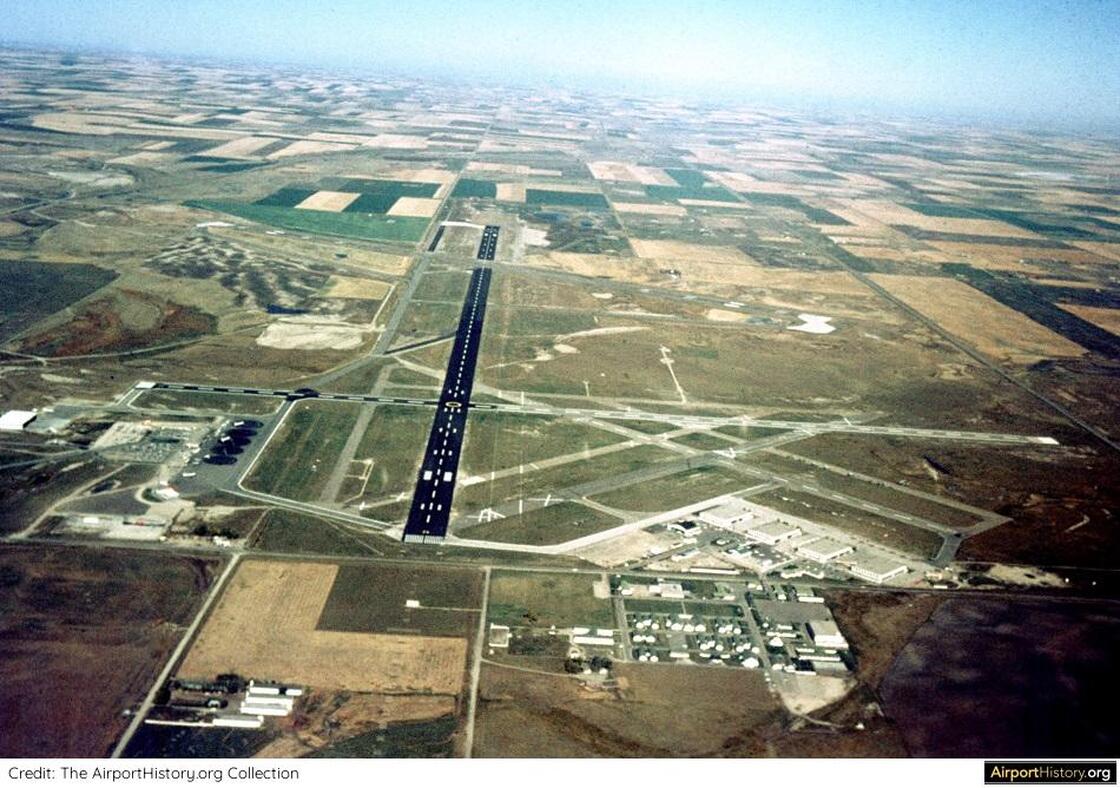
A rare undated 1960s aerial view of Calgary Airport, looking north. The passenger terminal was located in the southwestern part of the airport (lower left in picture). Calgary's current passenger terminal complex is located in the northeast of the field (to the right of the main runway's threshold).
Edmonton
Edmonton, the capital of Canada's Alberta province, opened Edmonton International Airport on December 3rd, 1960, supplementing the downtown Edmonton Municipal Airport. Initially, passengers were processed in a maintenance hangar, but in December of 1963, a brand new CAD 10 million passenger terminal building was put into service.
The new generation terminal was state-of-the-art, but the one feature that was missing was the boarding bridge. The terminals were designed in the mid-1950s, while the first boarding bridges were tested in the late 1950s. Boarding bridges were installed at major Canadian airports in the period between 1965-1970.
The new generation terminal was state-of-the-art, but the one feature that was missing was the boarding bridge. The terminals were designed in the mid-1950s, while the first boarding bridges were tested in the late 1950s. Boarding bridges were installed at major Canadian airports in the period between 1965-1970.
Gander
Gander, a town located in the northeastern part of the island of Newfoundland, owes its entire existence to its airport, which was opened in 1938. Until the late 1950s, almost every piston-engine aircraft crossing on the Atlantic route had to refuel in Gander. In 1958, there were 9,273 landings at Gander, and 407,000 passengers passed through the airport, making it one of the busiest in the world at the time.
In 1959, the Queen of England opened a sleek, modernist International Departures Lounge at Gander airport. However, in the late 1950s, jet aircraft came into service on the North Atlantic. The high performance and longer range of these new aircraft soon had an impact on Gander. And as more airlines bought jet aircraft, Gander's importance and traffic declined.
With traffic being a fraction of what it was in the 1950s, in 2014 the airport authority announced the intention to tear down the terminal and replace it with a smaller, more up-to-date structure. Luckily, these plans have been abandoned, and in 2018, the airport authority announced that it would invest CAD 1.5 million in renovating the beautiful lounge and opening it up to visitors.
We'll be doing a separate feature on the golden age of Gander soon.
In 1959, the Queen of England opened a sleek, modernist International Departures Lounge at Gander airport. However, in the late 1950s, jet aircraft came into service on the North Atlantic. The high performance and longer range of these new aircraft soon had an impact on Gander. And as more airlines bought jet aircraft, Gander's importance and traffic declined.
With traffic being a fraction of what it was in the 1950s, in 2014 the airport authority announced the intention to tear down the terminal and replace it with a smaller, more up-to-date structure. Luckily, these plans have been abandoned, and in 2018, the airport authority announced that it would invest CAD 1.5 million in renovating the beautiful lounge and opening it up to visitors.
We'll be doing a separate feature on the golden age of Gander soon.
Halifax
Halifax is the provincial capital of Nova Scotia and a major business center. Halifax's current international airport opened on September 10th, 1960, replacing nearby Dartmouth Airport, as the region's main airport.
Designed by Gilleland and Strutt, the terminal provided an area of 165,000 square feet (15,329 square meters) of space and contained waiting rooms, a ticket concourse, coffee shop, restaurant concessions, airline offices and Department of Transport Services.
Designed by Gilleland and Strutt, the terminal provided an area of 165,000 square feet (15,329 square meters) of space and contained waiting rooms, a ticket concourse, coffee shop, restaurant concessions, airline offices and Department of Transport Services.
Montréal
In the mid-20th century, Montréal was Canada's largest city and the country's commercial and cultural center.
With the presence of both the International Civil Aviation Organization (ICAO) and the International Air Transport Association (IATA), Montréal was (and is still) considered the world's civil aviation capital. In the mid-1950s, the city's Dorval (now Trudeau) Airport set out on a major expansion program to accommodate the new generation aircraft and the explosive growth of passenger traffic. |
Enjoying this article?
|
A brand new jet runway was built and existing runways lengthened. In December 1960, a brand-new CAD 30 million passenger terminal was opened.
With a length of 2,131 feet (650 meters), it was the largest single passenger terminal building in the world at the time.
Designed by local architects Illsley, Templeton and Archibald, Larose and Larose, associated architects, under supervision of the Architectural Division of the Department of Transport, the terminal was designed to process 12 million annual passengers--six times the volume that Dorval was handling in the early 1960s--and could be expanded if necessary.
With a length of 2,131 feet (650 meters), it was the largest single passenger terminal building in the world at the time.
Designed by local architects Illsley, Templeton and Archibald, Larose and Larose, associated architects, under supervision of the Architectural Division of the Department of Transport, the terminal was designed to process 12 million annual passengers--six times the volume that Dorval was handling in the early 1960s--and could be expanded if necessary.
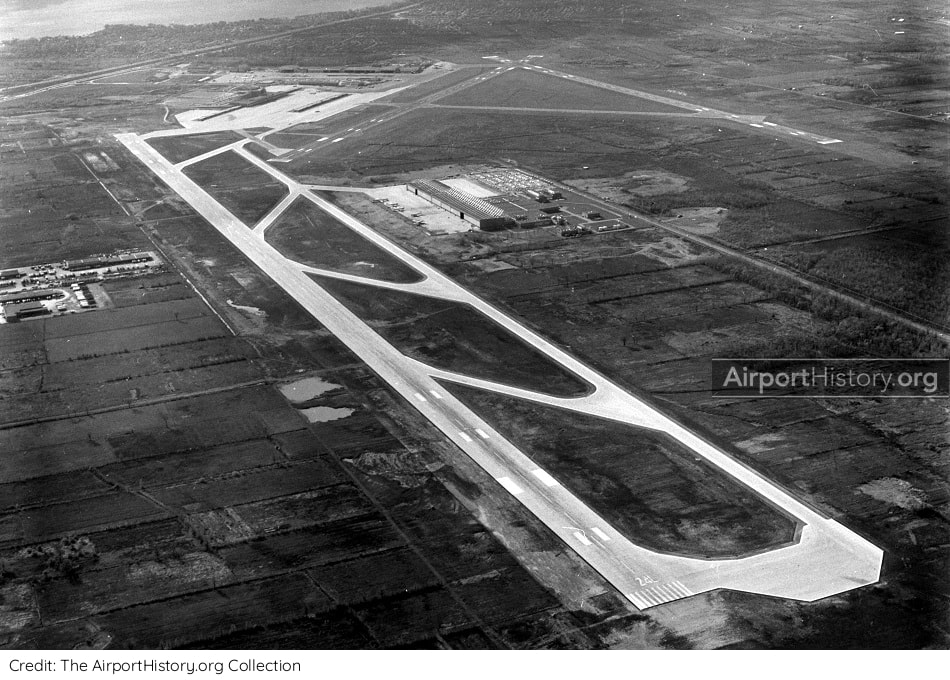
A 1960 aerial of Montréal's Dorval (now Trudeau) Airport, looking west. Prominently featured is the airport's brand-new 9,600-foot (2,926-metre) jet runway. The parallel runway 06L/24R, visible in the top right of the image, would subsequently be lengthened to 11,000 feet (3,353 meters). Next to the new runway are Air Canada's new maintenance facilities. The new terminal can be seen off the new runway's end to the right.
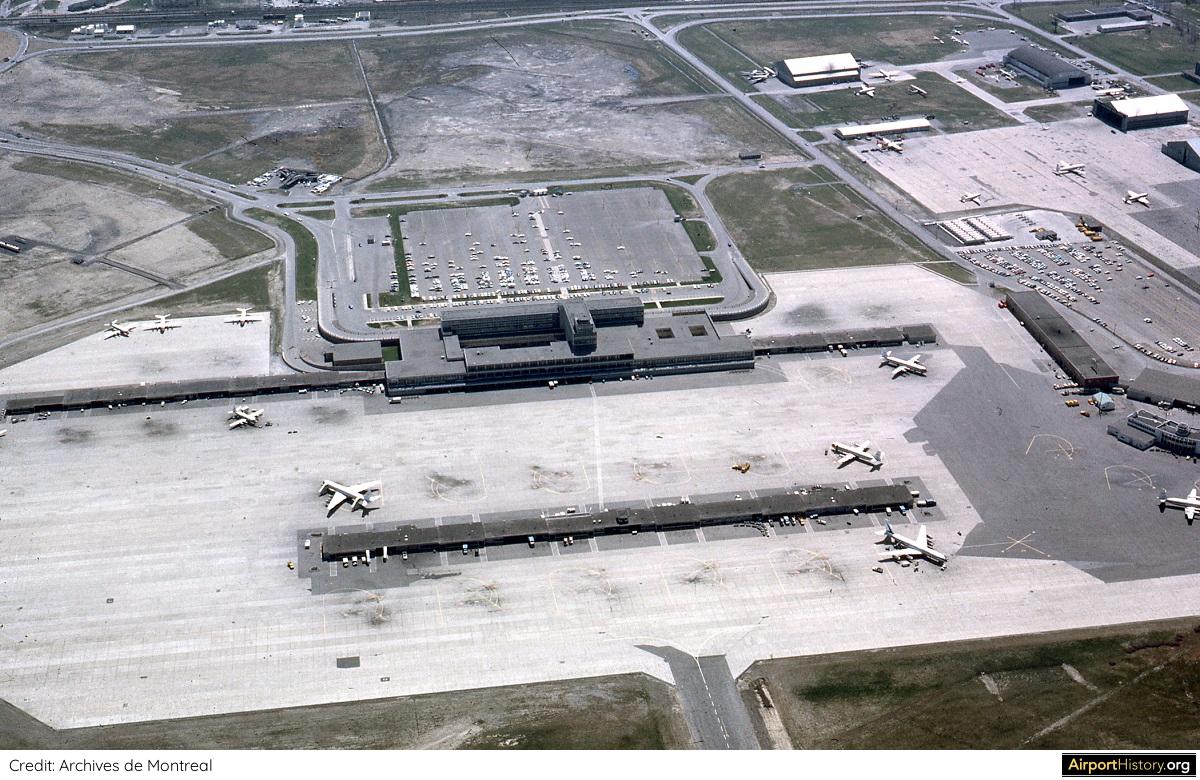
A 1966 aerial of Dorval's passenger terminal. A unique design feature of the terminal complex was the provision of a satellite building, called "Aeroquay". The Aeroquay was connected to the main building by means of two underground tunnels. Initially, passengers complained about the large distance that they had to walk through the tunnels, which resulted in moving walkways being installed in 1966. The fingers and satellite provided a total of 23 gates. The original 1941 terminal is visible in the far right of the image.
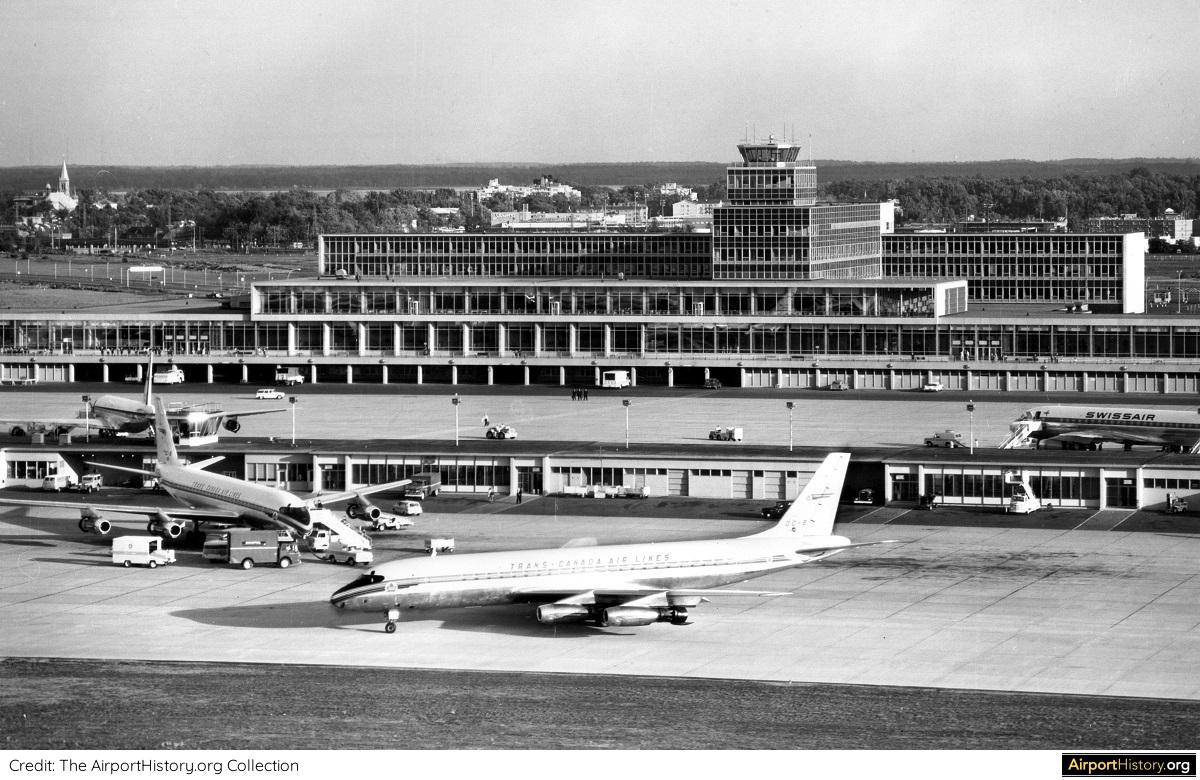
A 1962 airside view. The gates were located in the single-level concourses protruding out from the main building and the Aeroquay. Ticketing, check-in desks, waiting rooms and concessions were located in the main building on the second floor. The third floor contained a dining room. The airport's tower rose eight levels above the aircraft parking apron.
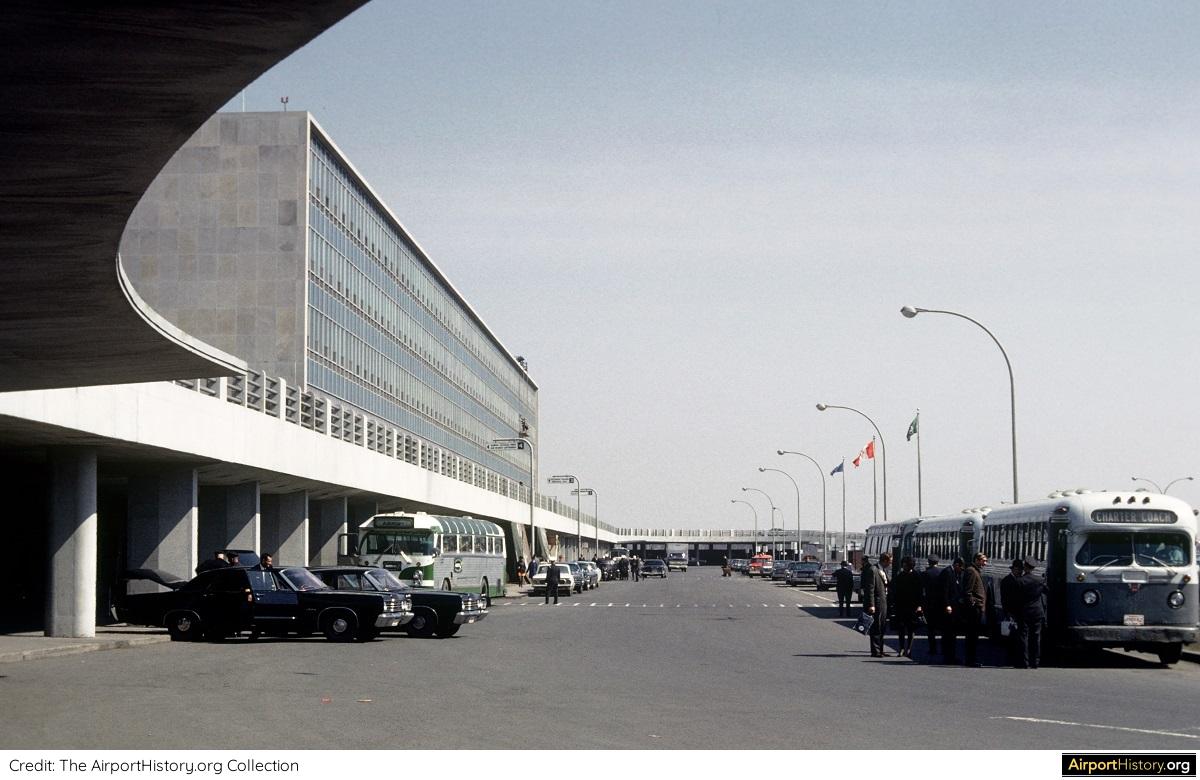
An undated 1960s view of the arrival curb. Passengers arriving by car enter the building via an elevated entrance ramp, making Montréal one of the first airports to introduce this feature. The ramp was heated in winter to eliminate snow problems (quite a luxury in Montréal!). Parking was provided for 1,800 automobiles.
To be concluded in Part 2!
This concludes Part 1 of our photo special on Canadian airports in the 1960s! Part 2, to be posted soon, will include some very rare images of Toronto Pearson and Vancouver in the 1960s!
Did you visit any of these airports in the early Jet-Age years? Leave a comment below and share your memories!
Did you visit any of these airports in the early Jet-Age years? Leave a comment below and share your memories!

